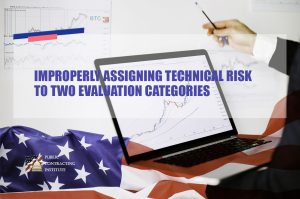The Government Accountability Office (“GAO”) is required to report to Congress annually in reports known as the “Annual Report on Bid Protests.” Congress added a new requirement to the report in fiscal year (“FY”) 2013, requiring that it include “a summary of the most prevalent grounds for sustaining protests during the preceding year.” 31 U.S.C. § 3554(e)(2). All three of the FY 2013-15 GAO Annual Reports on Bid Protests identified “failure to follow the evaluation criteria [in the solicitation]” as one of the most prevalent grounds for sustaining protests. Now comes the GAO with a new twist—sustaining a protest because an agency assigned a weakness to two separate evaluation categories, and thereby failed to follow the solicitation evaluation criteria. Innovative Test Asset Solutions, LLC, B-411687, Oct. 2, 2015. In this protest, the agency assigned a cost risk not only to the likely cost in a cost realism analysis, but improperly reduced the offeror’s technical score because of that risk.

Innovative involved a Request for Proposals (“RFP”) for a cost-plus-award-fee contract for test operations and sustainment at the Air Force Arnold Engineering Development Center in Tennessee. The RFP stated that award would be made on a best value basis, based on three evaluation factors: technical, past performance and cost. The technical factor consisted of four equal subfactors: technical operations, management approach, qualified personnel and innovations and efficiencies. Two offerors submitted proposals, Innovative and National Aerospace Solutions (“National”). The results of the evaluation were as follows:
| National | Innovative | |
| Technical | ||
| Technical Operations | Outstanding/low risk | Outstanding/low risk |
| Management Approach | Outstanding/low risk | Outstanding/moderate risk |
| Qualified Personnel | Outstanding/low risk | Outstanding/moderate risk |
| Innovations & Efficiencies | Acceptable/low risk | Acceptable/moderate risk |
| Past Performance | Substantial confidence | Substantial confidence |
| Total Proposed Cost | $1.516 billion | $1.467 billion |
| Total Evaluated Cost | $1.516 billion | $1.493 billion |
The Air Force identified 22 strengths and no weaknesses in National’s technical proposal and 17 strengths and 3 weaknesses in Innovative’s technical proposal. As noted, Innovative’s proposed (estimated) costs were adjusted upward by $26 million. The Air Force selected National, finding its proposal to be technically superior and concluding that the technical superiority outweighed in each instance the associated cost premium.
The GAO examined five separate protest grounds, but sustained only two of them—the evaluation of the Qualified Personnel subfactor, and the Innovations and Efficiencies subfactor. For each subfactor, the Air Force identified no technical risks or shortcomings in either factor. However, in both cases, the evaluators found there was a risk in the cost savings shown in the proposal. The GAO held that these were not technical weaknesses, but cost weaknesses that should have been evaluated as such elsewhere. The GAO said:
The [Air Force] did not identify technical weaknesses that could, among other things, increase cost (such as it reasonably represented technical risk). Rather, the agency evaluators essentially inverted the evaluation rating scheme, and improperly considered cost risk to be technical risk, even when no technical shortcoming had been identified. We find this application of technical risk to be unreasonable—the lack of fully-supported cost savings estimates does not, by itself, represent technical risk under the RFP’s stated evaluation criteria.
GAO sustained the protest on these grounds, and recommended re-evaluation of Innovative’s technical proposal.
Once again, the message from the GAO is clear: evaluate in accordance with the RFP evaluation criteria. Do not “invert” the evaluation scheme and only evaluate each factor in accordance with the specific attributes that are associated with that factor.
